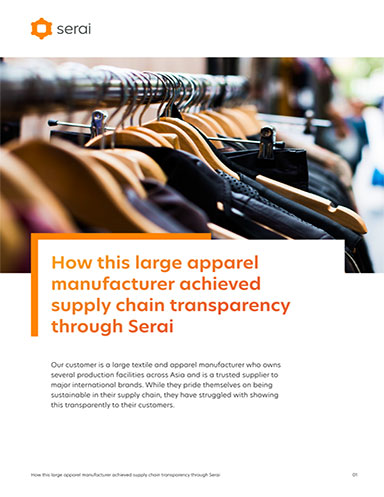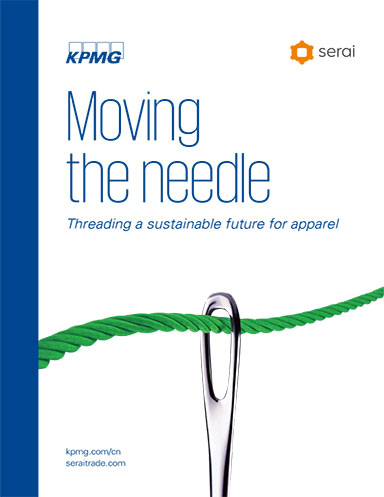New Approach to Supply Chain Transparency
Consumer pressure, political tensions, forced labor accusations and new regulations have increased the pressure on companies to share information on their supply chains.
Supply Chains have Evolved, But at What Cost?
True supply chain transparency is unfortunately a herculean task for most companies.
Today’s supply chains evolved to serve a very specific objective - minimize costs. Cheaper products have come at the expense of supply chain transparency. Complexity and opacity have been accepted consequences.
Manufacturing hubs are scattered across the world. Few products originate from a single country; raw materials come from one region, with production done in another.
Whilst there are some businesses that benefit from the current lack of transparency, in our experience, the overwhelming majority of businesses just don’t know how to get or share the required information.
Most brands can’t prove who their suppliers are beyond tier-2. Supplier sophistication varies hugely. There are still many upstream suppliers who rely on verbal contracts and whose data management system is basically an excel spreadsheet.
Businesses have taken the approach of fighting the nearest fire; scrambling to collect information to address the most pressing compliance requirements. This data is not stitched together to tell the full story. Few businesses can prove who is in their supply chain (beyond the suppliers they directly contract with) and fewer are capable of staying on top of the business practices adopted by their suppliers.
The need for a Systematic Approach to Supply Chain Transparency
Businesses must embark on a more structured journey to collect information on or from their suppliers. The demands for information will only grow. Knowing your supply chain all the way through to the raw material producer and the ESG credentials of your suppliers will become a requirement for every business.
Germany recently joined countries such as the UK, Australia, and the Netherlands in the global legislative trend to combat unsustainable supply chain practices by passing its own Supply Chain Due Diligence Act (‘Lieferkettengesetz’). From 2023 businesses with over 3000 employees have to prove that their supply chains are sustainable and that there are no human rights violations in their supply chains.
Businesses are looking to and are expected to collect insights into areas such as consumption of water, energy and greenhouse gas, or hours spent throughout the various stages in the supply chain. However, with this information stored in disparate systems and collected manually, it is almost impossible to get the right information, let alone manage ESG credentials.
Being able to access all the data in one place is powerful – companies can easily look up where a specific item is sourced from, or where it was produced. They can see the ESG credentials of the participants in their supply chain.
In addition to demonstrating ESG commitments, this knowledge will also help businesses identify inefficiencies in their supply chain. For industries such as fashion and food retail, which are two of the biggest polluters, this would be valuable information. This data can also be shared securely with the entire supply chain to encourage better collaboration and efficiency.
Serai Supply Chain Solutions from Serai on Vimeo.
Technology Can be the Solution
Thankfully the technology to change this status quo exists today. Platform-based solutions allow businesses to integrate data from multiple sources, with incentives for suppliers to share information, and allowing for external verification.
Technology can not just help businesses achieve their ESG objectives and meet the growing demands for disclosure, but can also help them stay a step ahead - of their investors, customers, regulators and competitors.
Related Resources
How A Large Apparel Manufacturer Achieved Supply Chain Transparency
A large textile and apparel manufacturer that prides themselves on being sustainable in their supply chain have struggled with showing this transparently to their customers. Download Now!
Threading a Sustainable Future for Apparel
Supply chain transparency has the potential to bring multiple benefits to companies across the apparel industry. Download Now!
Article Topics
Serai News & Resources
Fashion Powerhouse Implements Supply Chain Transparency for its Sustainability Efforts Supply Chain Transparency Helps Lever Style build Trust With Their Partners What are the Various Aspects of Supply Chain Sustainability? Why Apparel Companies Need a Strong Digital Presence New Approach to Supply Chain Transparency Four Changes Apparel Manufacturers Must Make with the Current Coronavirus Pandemic Threading a Sustainable Future for Apparel More SeraiLatest in Supply Chain
Trucking Industry Pushes Back on Government’s Electric Mandates Senators Take Aim at Amazon with Warehouse Worker Protection Act Maersk Sees Silver Lining in Red Sea Shipping Challenges Happy Returns Partners With Shein and Forever 21 to Simplify Returns Baltimore Opens 45-Foot Deep Channel Following Bridge Collapse El Paso Border Delays Cost Juarez $32 Million Per Day in Economic Losses Ranking the World’s 10 Biggest Supply Chains More Supply Chain














